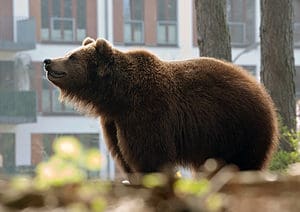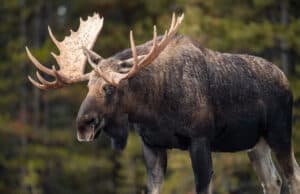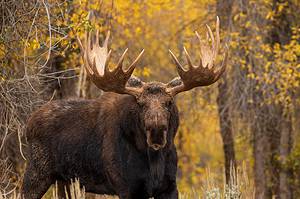Besides being the tallest mammals in North America, moose (Alces Alces) are also the world’s largest and heaviest deer species. They can grow to an impressive height of about six feet from the ground to their shoulders and weigh up to 1,500 pounds. Found in Asia, Canada, Europe, and the United States, one can quickly identify a moose by its lanky appearance and long face.
However, knowing if a moose has been in some place can be pretty challenging. While these animals typically leave a trail with their large hoofed footprints, that’s not enough identification material in some cases. Luckily, we know a moose is close by through their poop, and that’s what this article is about—and more!
What Does a Pile of Moose Poop Look Like?

Moose poop typically looks like oval-shaped balls, with a hard texture during the winter.
©Jonathan A. Mauer/Shutterstock.com
You can determine if you’re in moose territory by identifying their poop. While this may sound like a walk in the park, it’s a pretty challenging activity. That’s mainly because moose scat looks different depending on numerous factors, like their diet and weather. For these reasons, their droppings may look like bears‘ and cows‘.
So, are there fool-proof ways to determine moose poop? Of course, there are. First, moose scat typically looks like oval-shaped balls, with a hard texture during the winter. One may also describe the texture as dense. During these months, their dung is about 0.5-0.8 inches wide and 1-1.5 inches long.
Their diets change as the months become warmer, and so does their poop. One will notice that a moose’s scat takes the shape of a mushroom or dumbbell. Their poop colors are black and dark shades of brown.
That’s not all—a moose’s diet (and poop, of course) changes slightly as spring approaches. Since they drink more water and eat more grass during this period, their dung will have a softer texture and resemble a cow’s.
One thing to note about moose is that they’re ruminant animals, which also affects their scat’s texture. Since they chew their cud, they can properly digest their food’s cellulose content. As such, their poop will look fine-textured and consistent without food remnants.
How’s Moose Poop Different From Those of Other Animals?
One excellent way to know moose scat is to understand how they differ from other animals. Let’s compare a moose’s dung with those of bears and elks:
- Moose Scat vs. Bear Scat
Telling a moose’s poop from a bear’s can be difficult, especially during summer when they have the most striking resemblance. However, unlike moose, bears are omnivorous and feed on some mammals, birds, grain, insects, berries, fish, etc. Bears aren’t ruminants like moose, so they cannot digest their meals properly. These factors significantly affect how their poop looks.
Since bears have simple digestive systems like humans, it’s easy to spot their poop. A significant amount of what they eat goes undigested and comes out through their poop. So, breaking a bear’s poop apart with a stick will reveal unprocessed particles of whatever they ate. It could be leaves, berries, hair, etc.
You wouldn’t find those in a moose’s poop because their four-chambered stomach thoroughly digests everything they consume. Their droppings will remain fine and consistent with a uniform color, regardless of the climate.
- Moose Scat vs. Elk Scat
Many people, especially in Europe and North America, use “elk” and “moose” interchangeably to refer to the same animal. That’s likely because both of them come from the deer family. However, they’re different animals, regardless of whatever similarities they may share.
For example, an elk (Cervus canadensis) is smaller than a moose, has a height of 3 to 5 feet, and weighs between 485 and 730 pounds. While elks have golden brown-colored bodies, moose are dark brown or black. However, when it comes to their scat, it’s challenging to tell the difference since both animals have similar feeding patterns. They eat tree bark and twigs, and their diet changes with the climate.
One way to differentiate moose scat from elk poop is the size—an elk’s dung is relatively smaller. However, a large elk may have droppings as big as a moose’s. So, scat size is not an effective method of telling them apart. Fortunately, there are other differentiating factors like their shape and color. During winter, an elk’s dung looks like pellets, while moose have theirs in piles of dry and oval nuggets. Generally, a moose has lighter-colored poop than an elk’s scat. A moose’s scat also has more cellulose content than an elk’s poop.
What Do Moose Eat?
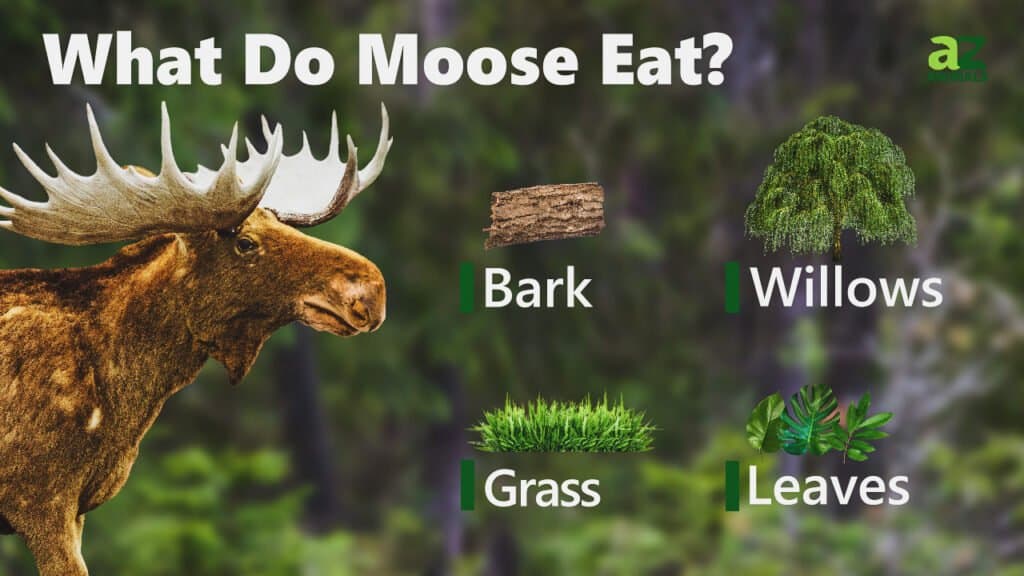
Moose means “eater of twigs” in Algonquin language, and nothing could be more accurate in describing their diet. They feed primarily on twigs, leaves, pine cones, and tree barks (especially those of aspen, willow trees, and fir). Surprisingly, moose are powerful swimmers, and one will often find them in swamps and wetlands.
They love to dive into the water to pull out plants underneath and munch on them. This animal can dive as deep as 20 feet to find food in water and remain there for up to 60 seconds before reaching for air.
As ruminant animals, moose have similar dental structures to goats, sheep, cattle, and some other animals in the deer family. Moose are generally herbivores as they feed on many plant varieties. They love forbs, aquatic plants, and deciduous leaves in the summer and increase their intake of shrubs, needles, and twigs during the winter.
What Are Moose Poop Used For?
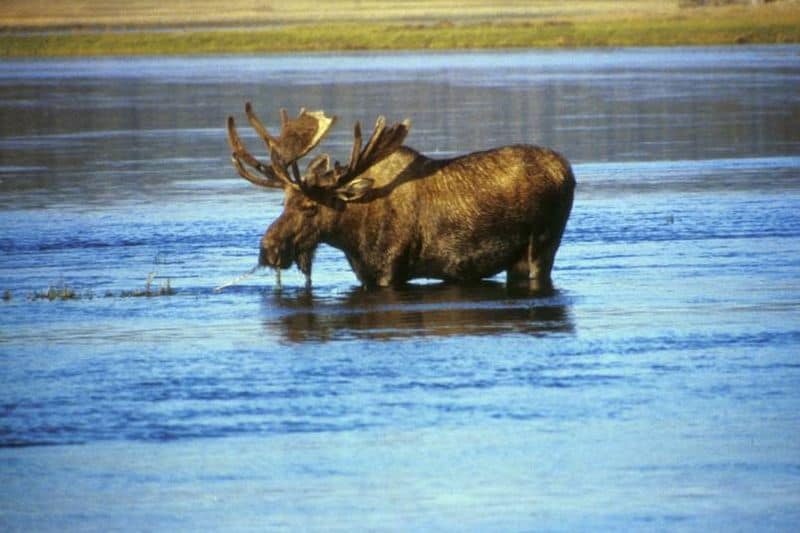
Moose droppings make for an effective organic fertilizer.
©Mike.lifeguard – Public Domain
Like many other animal droppings, a moose’s scat makes for an effective organic fertilizer. It contains calcium, magnesium, and other essential nutrients that enhance plant growth. Surprisingly, there are reports of some people converting moose scat into pieces of art and jewelry. They do this by coating the pellets in polyurethane to improve their strength or drying them in dehydrators. After a while, artists start to make them into artworks and ornaments.
The photo featured at the top of this post is © Steve Bower/Shutterstock.com
Thank you for reading! Have some feedback for us? Contact the AZ Animals editorial team.



